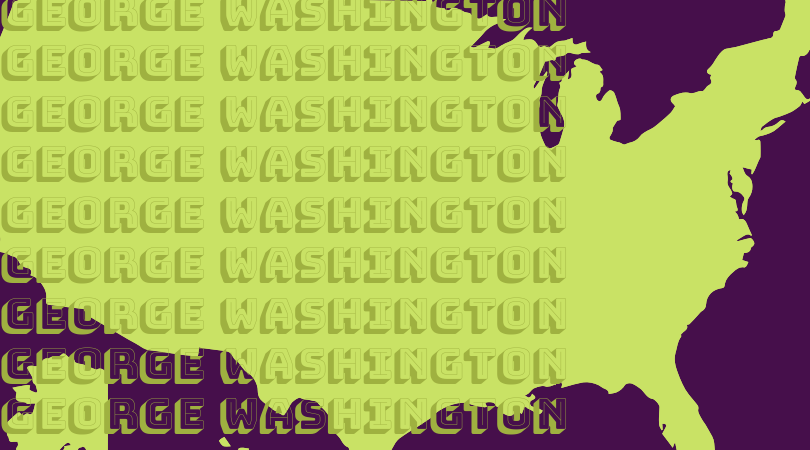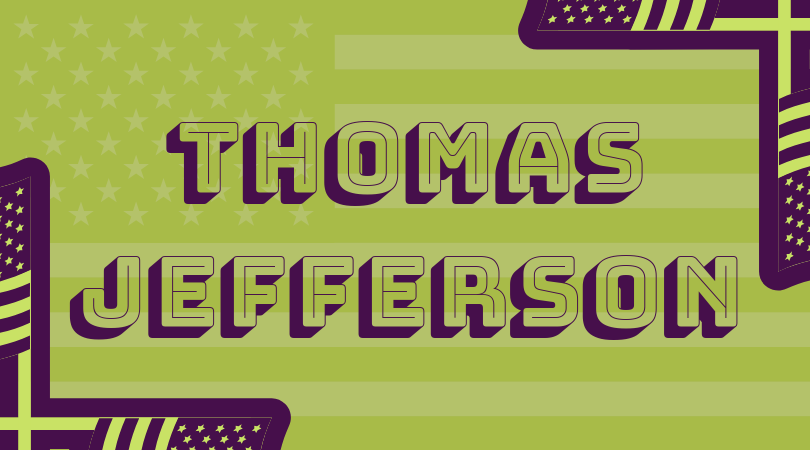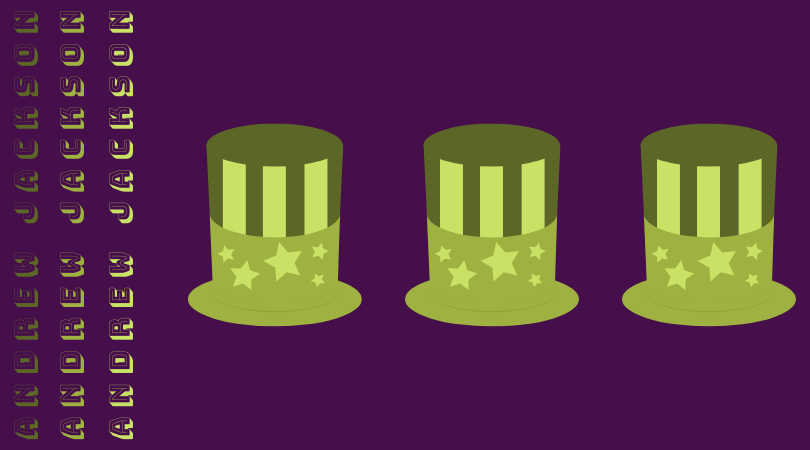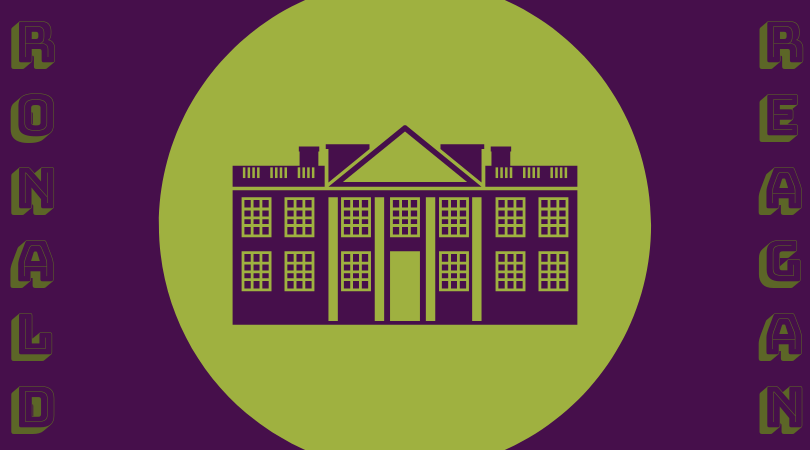Your Problematic Favs: Presidents Edition
Words by Michael Alles
Illustration by Katie Herchenroeder
Presidents Day wasestablished in 1879 by president Rutherford B. Hayes. It was originally onlycelebrated in Washington D.C., but was extended in 1885 to the entire country.In 1971, the Uniform Monday Holiday Act was passed in an attempt to create morethree-day weekends for the nation’s workers. Most of us look at Presidents Dayas a day off, and nothing more. Instead of blindly celebrating all of our pastpresidents, let’s look at some of their policies a little closer.
George Washington

Washington is oftenremembered as our first president, the man on the one-dollar bill, and the heroof the American Revolution. But, he is very rarely remembered as a cruel slaveowner or an expansionist land-stealer.
At the age of eleven,Washington already owned ten slaves. Throughout his life, he continued toacquire slaves, either from the estates of family members or through directpurchase. At the time of the American revolution, he owned 150 slaves.
After becomingpresident of the newly-created United States in 1789, he relocated toPhiladelphia, Pennsylvania, which posed a dilemma. Under the Gradual AbolitionAct of 1780, any slave who entered Pennsylvania for longer than six monthswould be set free automatically. To get around this law, Washington would bringall his slaves outside of Pennsylvania’s borders every six months, essentiallyresetting the clock, allowing him to keep his slaves, and preventing theirfreedom that was guaranteed by law.
In 1793, Washingtonsigned the Fugitive Slave Law, allowing escaped slaves to be captured andreturned back to their owners. This law created a new work force of slavecatchers and made escaped slaves into a commodity. At the time of his death,Washington owned over 100 slaves.
Washington also repeatedlyused his armies to push Native Americans off their own land. In 1790 and 1791,he sent military forces to kill Native Americans who opposed the expansion ofAmerican citizens on their land. His forces were swiftly defeated. Instead of backingoff, he got congressional approval to bring a 5,000-man army to slaughter theNative Americans that refused to concede to his demands. He attempted to signmany treaties with Native tribes, but rarely enforced them, allowing Americancitizens to build settlements on stolen land.
Thomas Jefferson

Jefferson, one writerof the Declaration of Independence, fell short of his quote that “all men arecreated equal.”
After therevolution, Jefferson argued that slavery was instrumental to the survival of theUnited States. He viewed slaves as a financial investment and encouraged“breeding” slaves for profit. In a quote from his farm book he wrote “childrenfrom 10 years old to serve as nurses. From 10 to 16 the boys make nails, thegirls spin. At 16 go into the ground of learn trades.” Jefferson owned a nailfactory, which was run by child slave labor. He saw his business as moralbecause “it would employ a parcel of boys who would otherwise be idle.”
Jefferson’s“relationship” with Sally Hemmings has often been romanticized throughouthistory, but it was no love story. Hemmings was an enslaved girl who wasrepeatedly raped by Jefferson. Historians have argued that their relationshipwas consensual, but she was Jefferson’s property. Jefferson was legally allowedto rape her, and she had no say in the matter. She first got pregnant at theage of 15 and gave birth when she was 16. Throughout the course of her life,she bore at least six of Jefferson’s children. Jefferson never legallyemancipated her, even when he was on his deathbed.
Jefferson believedthe only way to protect Native Americans was to remove them from their ownland. He promoted policies that forcibly pushed thousands of indigenous peopleoff their own land in an effort to build more settlements as early at 1776.Following the Louisiana Purchase in 1803, where Jefferson purchasedapproximately 827,000 square miles of indigenous land from France for $15million, he continued to encourage the forced removal of Native Americans outof their homelands, gradually pushing them farther and farther west.
Andrew Jackson

The weird-lookingman figure of the 20-dollar bill was particularly horrible.
Jackson ownedhundreds of slaves, and was vehemently opposed to abolition movements, both inpublic and in private. Slavery allowed him to move up in society from a poorman to wealthy plantation owner. Historical records show that he was especiallybrutal to his slaves, publically whipping them and encouraging slave catchersto beat and whip his runaway slaves before returning them to him. In 1835, heworked with the postmaster general to censor anti-slavery messages fromnorthern abolitionists.
Jackson lovedslavery so much, he oversaw a genocide of Native Americans to make more roomfor slave plantations. He passed the Indian Removal Act in 1830, andimmediately stopped paying native chiefs their annuities to spend on tribalaffairs in an effort to weaken them.
He sat by idly assouthern states banned tribal assemblies, denied Native Americans the right tovote, testify in court, or mine gold on their own land. But stripping away rightsfrom Native Americans was not enough for Jackson, he wanted them dead.
After bribing nativeleaders and excluding their white counselors from negotiations, Jackson securedseveral fraudulent treaties. Then began the removal process, which was deadlyfrom the start. Thousands died from cholera, forced starvation, and the infamous“march” known as The Trail of Tears. Although specific figures are uncertain,experts believe more than 10,000 indigenous people were killed under Jackson’swatch. Over 50,000 others were displaced, opening up 25 million acres of NativeAmerican land that was settled by white Americans.
Franklin Delano Roosevelt

FDR is best knownfor being the first and only president to serve more than two terms, and theman who helped get the United States through the Great Depression and WWII.Despite this, many of his initiatives helped white people and left people ofcolor behind, or even worse, in concentration camps.
The New Deal helpedlift white Americans out of poverty but fell short when it came to people ofcolor. The Agricultural Adjustment Administration offered white landowners cashfor leaving their fields uncultivated but did not pay the people who actuallyworked the fields, most of whom were black. The Social Security Act did notprovide assistance to domestic workers, most of whom were black women.
Mexican-Americansalso worked on farms across the country. With farms going bankrupt because ofthe depression, thousands of workers quickly became unemployed. To combat this,FDR directed government forces to round up nearly 400,000 Mexicans and Mexican-Americans,many of them citizens, and send them to Mexico. Those who remained in theUnited States quickly realized that many of the New Deal initiatives did littleto help agricultural workers and people of color.
Ten weeks afterPearl Harbor, FDR signed Executive Order 9066, which forcibly moved nearly112,000 Japanese-Americans into concentration camps. Around 80,000 of them werecitizens, and the rest were born in Japan, making them ineligible for U.S.citizenship at the time. For 2 ½ years, they were forced to live in overcrowdedcamps in poor conditions. After they were released, many returned to theirhomes to discover that they had been sold to white families. Ten Americans wereconvicted of spying for Japan in WWII. None of them were Japanese or ofJapanese ancestry.
Ronald Reagan

Reagan is known asthe first celebrity president, appearing in numerous Hollywood films beforebeing elected to office in 1981. After his presidency, his response to the AIDSepidemic and his “War on Drugs” have become the subject of Hollywood films.
The AIDS epidemicbegan in 1981, the first year of Reagan’s presidency. The CDC first reported thedisease on June 5, 1981, calling it Pneumocystis Pneumonia. The presidentremained silent.
Reagan’s closeallies used the AIDS epidemic to demonize gay people. Jerry Falwell, a reverendand supporter of Reagan, said “AIDS is the wrath of God upon homosexuals.” PatBuchanan, senior advisor to Reagan, is quoted saying “The poor homosexuals — they have declared war upon nature, and now nature is exacting an awfulretribution.” Allthe while, Reagan stayed silent, and refused to condemn these homophobicattacks, let alone acknowledge the epidemic in the first place.
Reagan first publically mentioned AIDS on September 17,1985. That year, 5,636 Americans died of AIDS. Most of the bills passed toaddress the AIDS epidemic were passed by congress, without the help of Reagan.When Congress allocated $190 million for AIDS research in 1985, Reagan wantedto cut that spending by $70 million. By the end of his presidency, nearly17,000 Americans alone died from AIDS.
Reagan’s presidency is also marked by a dramatic increase inU.S. prison populations, thanks to his expansion of the “War on Drugs.” Hisadministration launched an expensive public-relations campaign aimed atdemonizing drug users and gaining public support for his “war.” His attacks ondrug users were targeted towards African Americans and other people of color,tapping into the racist beliefs of white Americans across the country.
From 1980-1985, the national rate of imprisonment rose by nearly 45% percent. Despite being nearly 12% of the population by the end of the 80s, African Americans made up nearly 46% of the nation’s prison populations, a direct result of Reagan’s War on Drugs. This overcrowding led to unsafe living conditions, like the spread of violence and AIDS within prison populations across the country.
No president isperfect. Some are worse than others. But, it is important to be critical of ourpast leaders, and the effects they have had on the world we live in today.Therefore, this Presidents’ Day, do some research, and what you find may not beso comforting. Further, maybe we can move Presidents day to a month that is notBlack History Month, so we are not “celebrating” bigoted, almost entirelywhite, men.





